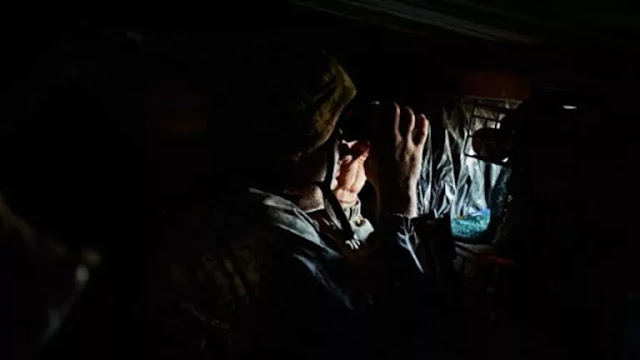Filenews 25 January 2024 - by David Axe
For 10 years, Ukrainian forces have been using an old Soviet air force bunker complex south of Avdivka along the front in northeastern Ukraine.
If Zenit falls, Avdivka may fall too – forcing the Ukrainian garrison to retreat after 10 years of resistance.
On Monday, Russian troops came closer than ever to cutting through the Zenit labyrinth. Failed. But they may not fail next time – because Zenit's defenders are running out of ammunition.
It's no secret why. Pro-Russian Republicans in the US House of Representatives have refused for months to approve the US dollars 61 billion package US President Joe Biden has proposed for military equipment to be sent to Ukraine this year.
Without American money for ammunition, Ukrainian artillery is silent. Meanwhile, Russian batteries, supplied from Iran and North Korea, continue to strike.
The Soviet Air Force used the Zenit bunker to house air defense units protecting an air base in the area, which is now not operational. The Soviets wanted Zenit to survive a nuclear war.
Ukrainian troops moved to Zenit in the early days of Russia's invasion of eastern Ukraine in 2014. Since then they have been there and live in the tunnels of the complex. The T0505 road connects Zenit with Avdivka, one and a half kilometers north.
The hilltop Zenit bunker is "extremely important for defending the city and keeping the roads to the city open," analyst Andrew Perpetua explained. "I can't understand how they will be able to defend themselves without it."
The Russians are fully aware of the importance of Zenit. And while they haven't figured it out, they nearly cut it off after fierce fighting on Monday. Russian troops reportedly bypassed Zenit in the east and advanced about a kilometer to the southern outskirts of Avdivka.
The Russian advance threatened to cut off Zenit's only supply line. But the Ukrainian garrison, led by the 110th Mechanized Brigade in the center of Avdivka, pushed back the Russians and reportedly eased pressure on the bunker.
But Zenit remains vulnerable. Compared to the northern side of Avdivka — where crews of the Ukrainian 47th Mechanized Brigade's M-2 combat vehicles have, for months, repelled wave after wave of Russian attacks — the city's southern side does not have the same resistance.
"While the northern part of Avdivka is protected by the AKHZ plant with robust industrial structures, the southern region consists mainly of vulnerable one- or two-storey houses, susceptible to artillery fire," notes Ukrainian think tank Frontelligence Insight.
"The right conditions exist for the Russians to approach," Frontelligence Insight added. "If they are not able to occupy the area, they will bombard it with artillery, send the light infantry and occupy the debris." Even so, the Russians could cut off Zenit. Probably soon.
If Zenit falls, the entire southern side of Avdivka could collapse. Ukrainian commanders may decide it is too dangerous to continue defending a razed city. They could order a retreat westward, offering the Kremlin a major propaganda victory ahead of Russia's presidential election in March.
Russia's 10-to-1 advantage in artillery ammunition makes it possible to attack "firepower first" on the outskirts of southern Avdivka. "Inadequate deliveries of military equipment by the Europeans and US aid hampered by internal political strife have created a vacuum that Russia is exploiting," explains Frontelligence Insight.
This advantage was not inevitable. It was, in practice, a political choice of the Republican Party in the US.
If House Republicans had voted in favour of the aid when Biden first proposed it in October, Ukrainian forces would have no shortage of ammunition today — and Zenit might not be in danger of falling.
